You need at least Create Slave permission or higher to create the slave using Swarm plugin.
You have the following options:
Open a request and have your network team create a new LDAP/service account (generic) so that you don't have to worry about it's password getting changed within next N no. of days.
Assign that user or grant it Create Slave permission or all access that see within (Slave section as per your image snapshot).
Use that user's userid/password. You can create a global variable / use manage credential section in Jenkins to define the user/password and it'll be available to use an ENV variable or for doing credential based authentication.
Run your command to create the slave and it'll work, something like:
$ java -jar swarm-client-2.0-jar-with-dependencies.jar \
-name "$(hostname -a)_01" \
-fsroot "$(pwd)/$(hostname -a)_01" \
-master http://my_jenkins_server.my.company.com:8081 \
-disableSslVerification \
-username c123456_or_slaveSpecialUser \
-password $p \
-description "$(hostname -a) " \
-executors 5 \
-labels "Linux CentOS ANSIBLE" \
-mode 'normal' \
-retry 3 \
-showHostName \
-t java=~/tools/jdk1.8.0_45 \
-t gradle=~/tools/gradle-2.9 \
-t Maven=~/tools/apache-maven-3.3.3 \
-t Groovy2=~/tools/groovy-2.4.5 \
--showHostName \
-disableClientsUniqueId
Note:
Mode can be -mode 'exclusive'
Using -disableClientsUniqueId option will create slave with the name as per your -name parameter (instead of suffixing it with a unique/alphanumeric ID).
Addition: To create Tool locations within the slave's configuration, I initially used -t **Java=~/tools/jdk1.8.0_45 -t Gradle=~/tools/gradle-2.9** and the command gave me an error No tool 'Java' is defined on Jenkins.
javax.servlet.ServletException: java.lang.RuntimeException: No tool 'Java' is defined on Jenkins.
After researching, I found this is because in my Jenkins Master (that I used), it's JDK Installations section in Jenkins global settings had this tool Name value set as "java" (all lower).
Trying -t java=~/tools/jdk1.8.0_45 resolved the issue and now I can see (JDK) java tool with value ~/tools/jdk1.8.0_45 in the slave's configuration.
NOTE:
If you are connecting or want to connect your slave to your Jenkins master using "Anonymous" user (i.e. then you don't have to provide -username c123456_or_slaveSpecialUser -password $p parameters), then in Jenkins Master's (with admin level permission do this one time only setup) > Under Manage Roles and Users > Under GLOBAL Roles section, create a role (or change existing Viewer role) and assign "Overall + Read" and "Slave + Create" access.
Then, on the same page, under "Slave Roles", create a Role for ex: autoslave or something like that and assign all access (Connect, Configure, ..., Delete) and MAKE sure assign a pattern(regex) for ex: "swarm_slave.*" in it. What this will do is, from now onwards, you can run java -jar slave-client-...depedencies.jar without using -username and -password paramters and if you are creating swarm slaves with name starting with "swarm_slave...." then, they will auto-create/connect/delete (as long as the swarm slave java process will run/exist on the slave server).
Following a standard name pattern for slaves will also give you more control if you'd use Jenkins Rest/API (groovy) scripts to maintain the swarm slaves.
Also look here for more (how to add ENVIRONMENT variables to the newly created node): Jenkins Slave - How to add or update ENVIRONMENT variables
Using Docker for creating containers on slave nodes is the next step. Don't forget to read more about these here:
http://dockins.github.io/
and
https://wiki.jenkins.io/display/JENKINS/Docker+Slaves+Plugin
https://github.com/jenkinsci/docker-slaves-plugin
 Obviously now I have to autheticate swarm client but I cannot able to do this.
If anyone has experience with swarm plugin please let me know.
Obviously now I have to autheticate swarm client but I cannot able to do this.
If anyone has experience with swarm plugin please let me know.